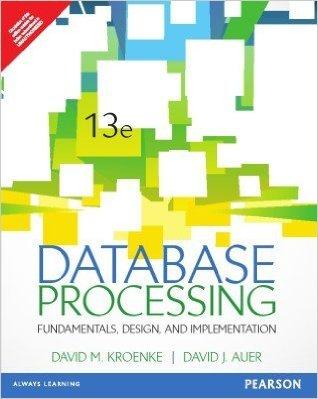Answered step by step
Verified Expert Solution
Question
1 Approved Answer
This is a matlab problem. There are multiple parts to this problem. One way to quantify this is with the volumetric coefficient of Most materials


This is a matlab problem. There are multiple parts to this problem.
One way to quantify this is with the volumetric coefficient of Most materials expand as their temperature increases. thermal expansion () linverse kevins, K. To calculate the change in volume of an object, you can use where is the change in temperature, and V is the initial volume. Thus the new volume after a temperature change is the initial volume plus ??. Part A 0.9 51 101 1.7 42 88.1 1.5 87 133 08 54 76.2 Create the variable SphData corntaining the matrix shown: Each row of SphData contains information about a solid sphere. The first column contains the masses ikilograms: the second column contains the coefficients of thermal expansion [10 /kelvin]; the third column contains the volumes at a temperature of 20 degrees Celsius [cubic centimeters). Part B: Assume the initial temperature of the spheres is 20 degrees Celsius. Place this value into the variable Init?. Part C Ask the user to type their last name and place the response in Enter your last name: Park Part D: Ask the user to enter their first name in an input dialog box and place the response in FirstHame. Enter your first nane: wiliy Part E: Using the oniginal matrx SphData, print the following The minimum mass is 0.8 kg. sentence to the command window Part F: Ask the user to enter a new temperature value to which the spheres are heated (or cooled). Place this value in Nar Part G: Determine the change in temperature between the new temperature and the initial temperature and place in the variable Deltaz Enter a new temperature [deg ci: 370 For the toliowing, you code should work correctly regardless of the number of spheres (rows) represented in the matrix SphData DO NOT code each row separately | Part H: Create a fourth coumn in SphData cortanng the specific gravities of the spheres. Be sure to include the conversion from kilograms to grams in your calculation Part t Create a matrix NewsphData containing the same information as the first two columns in SphData Part J: Using the information in SphData and DeltaT, add a third column to New8phData containingthe volumes of the spheres at the new temperature usng the equation: hew-? V ?? + V. IMPORTANT NOTE: As specified at the beginning of ths question, the expansion coefficients given are one million times larger than their actual values, so you need to divide each alpha value by 10 somewhere in your calculations One way to quantify this is with the volumetric coefficient of Most materials expand as their temperature increases. thermal expansion () linverse kevins, K. To calculate the change in volume of an object, you can use where is the change in temperature, and V is the initial volume. Thus the new volume after a temperature change is the initial volume plus ??. Part A 0.9 51 101 1.7 42 88.1 1.5 87 133 08 54 76.2 Create the variable SphData corntaining the matrix shown: Each row of SphData contains information about a solid sphere. The first column contains the masses ikilograms: the second column contains the coefficients of thermal expansion [10 /kelvin]; the third column contains the volumes at a temperature of 20 degrees Celsius [cubic centimeters). Part B: Assume the initial temperature of the spheres is 20 degrees Celsius. Place this value into the variable Init?. Part C Ask the user to type their last name and place the response in Enter your last name: Park Part D: Ask the user to enter their first name in an input dialog box and place the response in FirstHame. Enter your first nane: wiliy Part E: Using the oniginal matrx SphData, print the following The minimum mass is 0.8 kg. sentence to the command window Part F: Ask the user to enter a new temperature value to which the spheres are heated (or cooled). Place this value in Nar Part G: Determine the change in temperature between the new temperature and the initial temperature and place in the variable Deltaz Enter a new temperature [deg ci: 370 For the toliowing, you code should work correctly regardless of the number of spheres (rows) represented in the matrix SphData DO NOT code each row separately | Part H: Create a fourth coumn in SphData cortanng the specific gravities of the spheres. Be sure to include the conversion from kilograms to grams in your calculation Part t Create a matrix NewsphData containing the same information as the first two columns in SphData Part J: Using the information in SphData and DeltaT, add a third column to New8phData containingthe volumes of the spheres at the new temperature usng the equation: hew-? V ?? + V. IMPORTANT NOTE: As specified at the beginning of ths question, the expansion coefficients given are one million times larger than their actual values, so you need to divide each alpha value by 10 somewhere in your calculationsStep by Step Solution
There are 3 Steps involved in it
Step: 1

Get Instant Access to Expert-Tailored Solutions
See step-by-step solutions with expert insights and AI powered tools for academic success
Step: 2

Step: 3

Ace Your Homework with AI
Get the answers you need in no time with our AI-driven, step-by-step assistance
Get Started


